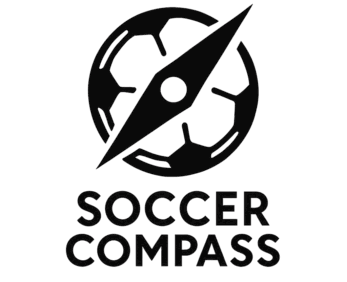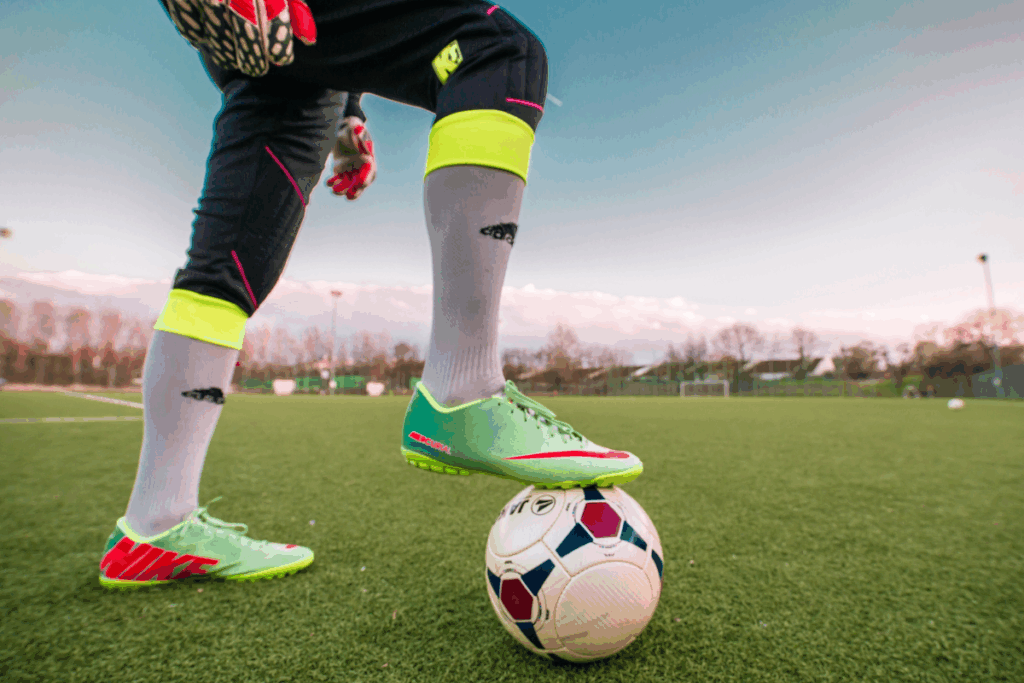Youth Soccer Rules Every Parent Should Know: The Complete Guide for 2025
The referee’s whistle blows, your child’s team celebrates what looks like a perfect goal, but suddenly the flag goes up and the celebration stops. As confused parents look around the sidelines, you realize you’re not alone in wondering: “What just happened?” Understanding youth soccer rules isn’t just about following the game—it’s about supporting your young athlete effectively, communicating intelligently with coaches, and helping create a positive environment where kids can thrive. Whether your child is just starting in recreational leagues or advancing to competitive play, this comprehensive guide will transform you from a confused spectator into an informed soccer parent.
Why Understanding Youth Soccer Rules Matters
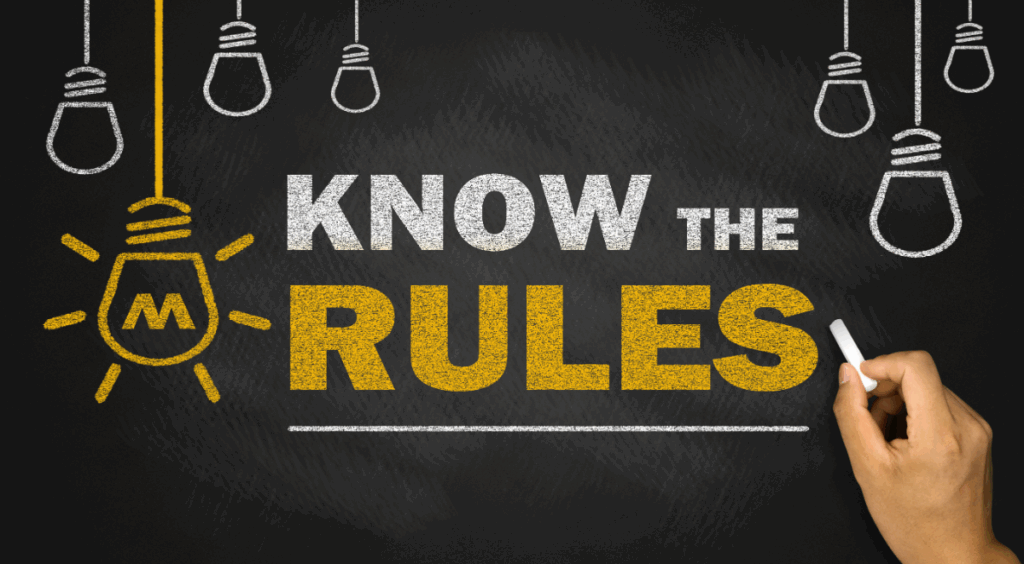
Youth soccer rules differ significantly from professional soccer, and for good reason. These modifications prioritize player development, safety, and enjoyment over strict adherence to adult game regulations. When parents understand these differences, they can better appreciate the thoughtful approach behind youth soccer’s structure.
The National Soccer Coaches Association of America reports that informed parents contribute to 23% fewer sideline conflicts and create more positive team environments. Additionally, children whose parents understand the rules show increased confidence and enjoyment in their soccer experience.
Fundamental Youth Soccer Rules: The Basics Every Parent Needs
Field Dimensions and Equipment
Youth soccer regulations mandate field sizes that scale appropriately with player age and development:
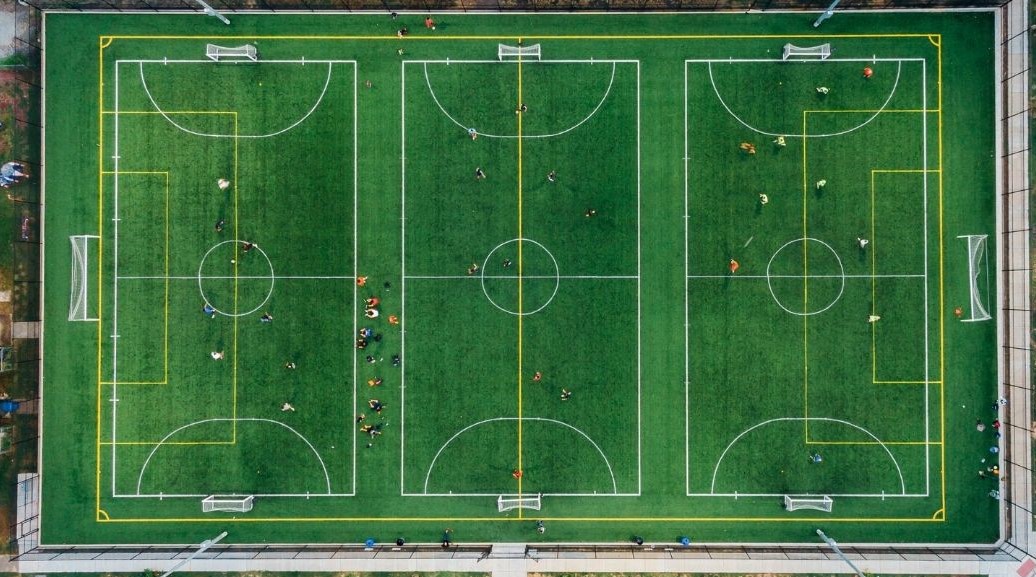
Ages 4-6:
- Field size: 15-20 yards long, 10-15 yards wide
- No goalkeepers
- Size 3 ball
- No corner kicks or throw-ins
Ages 7-8:
- Field size: 25-35 yards long, 15-25 yards wide
- Small goals (4 feet high, 6 feet wide)
- Size 3 ball
- Simplified offside rules or no offside
From Ages 9-10 (7v7 Format):
- Field size: 55-65 yards long, 35-45 yards wide
- Goals: 6 feet high, 12 feet wide
- Size 4 ball
- Modified offside rules
Ages 11-12 (9v9 Format):
- Field size: 70-80 yards long, 45-55 yards wide
- Goals: 7 feet high, 16 feet wide
- Size 4 ball
- Full offside rules apply
From Ages 13+ (11v11 Format):
- Full-size field: 100-130 yards long, 50-100 yards wide
- Standard goals: 8 feet high, 24 feet wide
- Size 5 ball
- All FIFA regulations apply
Game Duration by Age Group
One of the most important kids soccer rules concerns game length, which varies significantly from adult soccer:
Ages 4-6: Four 6-minute quarters (24 minutes total)
From Ages 7-8: Two 20-minute halves (40 minutes total)
Ages 9-10: Two 25-minute halves (50 minutes total)
From Ages 11-12: Two 30-minute halves (60 minutes total)
Ages 13-14: Two 35-minute halves (70 minutes total)
And from Ages 15+: Two 40-minute halves (80 minutes total)
These shorter durations ensure young players don’t experience excessive fatigue while still providing meaningful playing time for development.
Player Participation and Substitution Rules
Recreational soccer rules typically emphasize equal playing time, while competitive leagues may have different standards:
Recreational League Standards
Mandatory Playing Time:
- Ages 4-8: All players must play at least 50% of each game
- Ages 9-12: All players must play at least 25% of each game
- Ages 13+: Playing time requirements vary by league
Substitution Rules:
- Most recreational leagues allow unlimited substitutions
- Players can re-enter the game after being substituted (unlike adult soccer)
- Substitutions typically occur at quarter breaks, halftime, or during injury stops
- Some leagues implement “quarter systems” where different players start each quarter
Competitive League Variations
Competitive youth soccer regulations often mirror adult rules more closely:
- Limited substitutions (typically 3-5 per game)
- Once substituted, players usually cannot return
- Substitutions allowed during specific times (halftime, injury stops, throw-ins)
Offside Rules: Age-Appropriate Applications
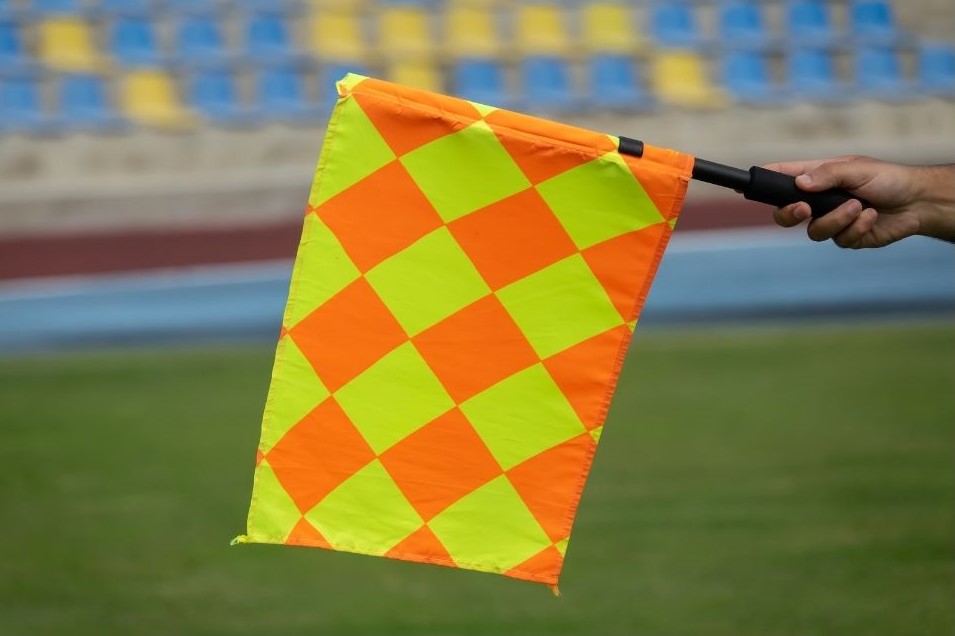
The offside rule represents one of the most significant differences in youth soccer rules:
Ages 4-8: No offside rule. This allows young players to focus on basic skills without worrying about positioning complexities.
Ages 9-10: Modified offside often applies only in the attacking third of the field, encouraging players to learn positioning while still allowing attacking flow.
Ages 11+: Full offside rules apply, but referees often provide educational explanations rather than immediate punishment for infractions.
Key Points for Parents:
- Offside is called when the ball is played by a teammate, not when receiving the ball
- Players cannot be offside on throw-ins, corner kicks, or goal kicks
- Being in an offside position isn’t an offense unless the player is actively involved in play
Referee Authority and Decision-Making
Understanding the referee’s role helps parents respond appropriately during games:
What Referees Control
- All rule interpretations during the match
- Player safety decisions
- Disciplinary actions (cards, ejections)
- Match timing and flow
What Referees Don’t Control
- League policies about playing time
- Team selection decisions
- Coaching strategies or substitutions
Important Note: In youth soccer, referees often take an educational approach, explaining calls to help players learn. Parents should support this learning environment rather than questioning every decision.
Cards, Fouls, and Disciplinary Actions
Youth soccer rules regarding discipline focus on education and safety:
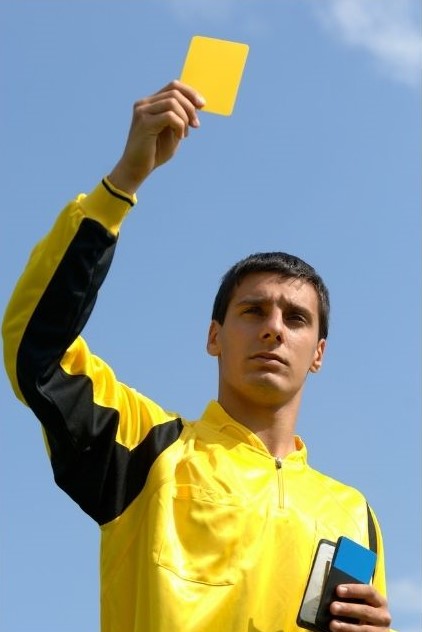
Yellow Cards (Cautions)
Common reasons include:
- Persistent fouling
- Dissent toward referees
- Unsporting behavior
- Delaying the game
Red Cards (Ejections)
Reasons for immediate ejection:
- Two yellow cards in the same game
- Serious foul play
- Violent conduct
- Offensive language toward officials
Age-Specific Considerations:
- Many leagues don’t issue cards to players under 10
- Some leagues use “cooling off” periods instead of cards
- Accumulation rules vary by league (typically 3-5 yellows = suspension)
Goalkeeper-Specific Rules
Goalkeepers operate under special kids soccer rules that parents should understand:
Basic Goalkeeper Rules
- Can use hands within their penalty area only
- Cannot pick up a ball deliberately passed back by a teammate’s foot
- Have 6 seconds to release the ball when holding it
- Cannot be challenged when releasing the ball
Age-Specific Modifications
Ages 7-8: Often no designated goalkeepers, or rotating goalkeeper positions
From Ages 9-10: Goalkeepers may have additional protections from aggressive challenges
Ages 11+: Standard goalkeeper rules apply with referees focusing on safety
Restart Procedures: Throw-ins, Corner Kicks, and Free Kicks
Understanding restart procedures helps parents follow game flow:
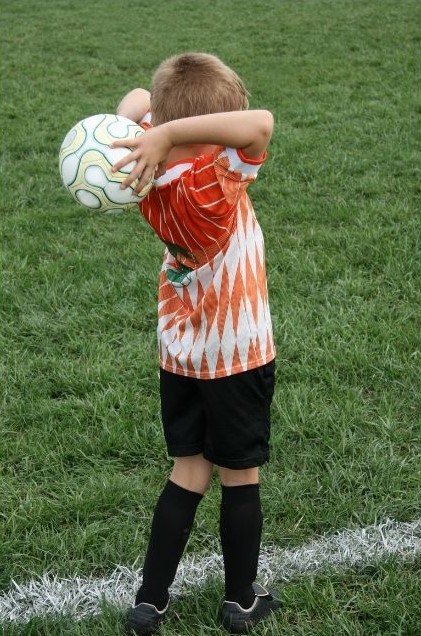
Throw-ins
Proper Technique Required:
- Both feet on ground
- Ball behind and over head
- Use both hands
- Face the field of play
Common Youth Modifications:
From Ages 4-6: Often use kick-ins instead of throw-ins
Ages 7-8: May allow re-takes for improper technique
Ages 9+: Standard throw-in rules apply
Free Kicks
Direct Free Kicks: Can score directly (awarded for more serious fouls)
Indirect Free Kicks: Must touch another player before scoring (awarded for technical violations)
Youth Modifications:
- Younger ages may not distinguish between direct and indirect
- Defending team often must be 7-8 yards away instead of 10
- Referees may provide positioning guidance
Corner Kicks and Goal Kicks
Standard rules typically apply across all age groups, though younger players receive more guidance on proper technique.
Equipment Requirements and Safety Standards
Soccer rules for parents include understanding mandatory equipment:
Required Equipment
- Jersey/shirt with number
- Shorts
- Socks (covering shin guards completely)
- Shin guards (mandatory for all ages)
- Soccer cleats
Prohibited Items
- Jewelry (watches, earrings, necklaces)
- Hard casts or braces without padding
- Anything the referee deems dangerous
Special Considerations:
- Medical alert bracelets may be allowed with proper documentation
- Glasses are permitted but sports goggles are recommended
- Hair accessories must be soft and non-dangerous
Weather Policies and Game Cancellations
Most youth soccer regulations include specific weather policies:
Lightning Policies
- Games suspended when lightning is visible
- Typically require 30-minute delays after last lightning sighting
- Safety always takes precedence over game completion
Heat Policies
- Water breaks mandated when temperatures exceed certain thresholds
- Games may be shortened or cancelled in extreme heat
- Coaches and referees monitor players for heat-related symptoms
Cold Weather Considerations
- Players may wear additional layers under uniforms
- Gloves and hats typically allowed
- Field conditions assessed for safety
League-Specific Variations You Should Know
Youth soccer rules can vary between different organizations:
Recreational Leagues (AYSO, I9 Sports, Local Leagues)
- Emphasis on equal playing time
- Flexible substitution rules
- Educational approach to rule enforcement
- Parent volunteer referees common
Competitive Leagues (Club Soccer, Travel Teams)
- More strict adherence to FIFA rules
- Merit-based playing time
- Professional or highly trained referees
- Stricter disciplinary policies
School Soccer
- High school rules may differ from club rules
- State athletic associations govern policies
- Academic eligibility requirements
- Different season structures
How to Handle Rule Disputes and Questions
When conflicts arise regarding kids soccer rules, follow this approach:
During Games
- Never confront referees directly
- Support your child regardless of calls
- Focus on effort and improvement, not winning
- Model positive sportsmanship
After Games
- Discuss questions privately with coaches
- Contact league officials for rule clarifications
- Research league handbooks for specific policies
- Attend parent meetings for ongoing education
Teaching Moments
Use rule situations to help your child:
- Understand fair play concepts
- Accept decisions gracefully
- Focus on personal improvement
- Respect authority figures
Age-Specific Rule Summary Tables
Ages 4-6
| Element | Rule |
| Players | 3v3 or 4v4 |
| Field Size | 15-20 x 10-15 yards |
| Game Time | Often Four 6-minute quarters |
| Ball Size | Size 3 |
| Offside | No |
| Goalkeepers | No |
Age Group 7-8
| Element | Rule |
| Players | 4v4 or 5v5 |
| Field Size | 25-35 x 15-25 yards |
| Game Time | Two 20-minute halves |
| Ball Size | Size 3 |
| Offside | No or very limited |
| Goalkeepers | Optional/rotating |
Ages 9-10 (7v7 Format)
| Element | Rule |
| Players | 7v7 (including goalkeeper) |
| Field Size | 55-65 x 35-45 yards |
| Game Time | Two 25-minute halves |
| Ball Size | Size 4 |
| Offside | Modified (attacking third only) |
| Goalkeepers | Yes |
Age Group 11-12 (9v9 Format)
| Element | Rule |
| Players | 9v9 (including goalkeeper) |
| Field Size | 55-65 x 35-45 yards |
| Game Time | Two 30-minute halves |
| Ball Size | Size 4 |
| Offside | Full rules apply |
| Goalkeepers | Yes |
Ages 13+ (11v11 Format)
| Element | Rule |
| Players | 11v11 (including goalkeeper) |
| Field Size | Full size (100-130 x 50-100 yards) |
| Game Time | Two 35-40 minute halves |
| Ball Size | Size 5 |
| Offside | Full FIFA rules |
| Goalkeepers | Yes |
Common Parent Misconceptions About Youth Soccer Rules
Myth: “All Youth Soccer Rules Are the Same”
Reality: Rules vary significantly by age group, league type, and geographic region. Always consult your specific league handbook.
Myth: “Referees in Youth Soccer Are Always Wrong”
Reality: Most youth referees are doing their best with limited training and resources. Many are volunteers or young referees gaining experience.
Myth: “My Child Should Play Every Minute”
Reality: Playing time policies vary by league type. Recreational leagues typically guarantee minimum playing time, while competitive leagues base playing time on merit and team needs.
Myth: “Parents Can’t Question Any Decisions”
Reality: While disputing referee calls during games is inappropriate, parents can seek clarification about rules and policies through proper channels after games.
The Evolution of Youth Soccer Rules
Youth soccer regulations continue evolving based on research about child development and sports psychology:
Recent Changes
- Increased emphasis on small-sided games for younger players
- Header restrictions for players under 11 in many leagues
- Enhanced concussion protocols
- Modified ball sizes for different age groups
Future Trends
- Greater individualization based on developmental rather than chronological age
- Technology integration for rule education
- Increased parent education requirements
- Enhanced safety protocols
How to Stay Updated on Rule Changes
Soccer rules for parents change regularly, so staying informed is crucial:
Official Sources
- Your league’s official handbook (updated annually)
- National governing body websites (US Soccer, AYSO, SAY)
- State soccer association communications
- Team manager or coach updates
Red Flags for Unofficial Information
- Social media posts without official sources
- “My friend’s coach said…” information
- Outdated websites or materials
- Conflicting information from multiple sources
Building a Positive Rule Environment
Understanding rules helps create better experiences for everyone:
For Your Child
- Explain rules at age-appropriate levels
- Emphasize safety reasons behind rules
- Model respect for officials
- Focus on effort over outcomes
The Team
- Support coaching decisions
- Avoid sideline coaching during games
- Contribute to positive team culture
- Volunteer for rule education opportunities
For the League
- Participate in parent education sessions
- Provide constructive feedback through proper channels
- Support referee development programs
- Promote sportsmanship initiatives
Conclusion: Empowering Your Youth Soccer Journey
Understanding youth soccer rules transforms your experience from confusion to confidence, from frustration to appreciation for the thoughtful structure that prioritizes your child’s development. These rules aren’t arbitrary restrictions—they’re carefully crafted guidelines designed to ensure safety, promote skill development, and maintain the joy that makes soccer the world’s most popular sport.
Remember that rules serve as the foundation for fair play, but the true spirit of youth soccer lies in supporting young athletes as they learn, grow, and develop both as players and as people. Your role as an informed parent is to model positive behavior, support the officials who volunteer their time, and help create an environment where every child can thrive.
The referee’s whistle will continue to blow, decisions will continue to be made, and games will continue to unfold. But now, armed with this comprehensive understanding of youth soccer rules, you can focus on what truly matters: watching your child discover the beautiful game and develop skills that extend far beyond the soccer field.
Your journey as a soccer parent is just beginning, and understanding these rules is your foundation for years of positive experiences ahead.
